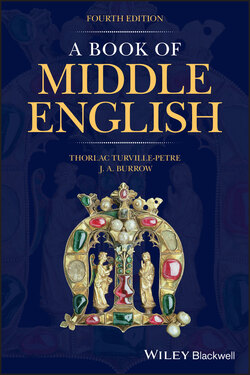Читать книгу A Book of Middle English - J. A. Burrow - Страница 59
5.4 Pronouns and Articles 5.4.1 Þou and ʒe
ОглавлениеThe use of ʒe as a polite form of address to one person is found from the late thirteenth century, and is modelled on French practice. Usage varies from text to text, and even within a text, but the distinction is broadly that þou is used between equals and to inferiors, whereas ʒe is used in representations of polite speech in address to a superior. In the selection from Gawain the usage is quite consistent: Arthur uses þou both to Gawain and to the Green Knight, but yow to Guenevere (9/470); Gawain uses þou to the Green Knight but ʒe to the King (9/343–61); the Green Knight, as a hostile challenger, always uses þou, even to the King – his ʒe in l. 265 is addressed to the court in general. In Trevisa’s Dialogue (text 12) the Clerk addresses the Lord as ʒe and the Lord replies with þou, while in Sir Orfeo þou is general, but the polite ʒe is used at a moment of solemn formality (5/582). In addressing God or the Virgin Mary, however, the singular form is customarily used, as by Chaucer’s Prioress (18b/1).
